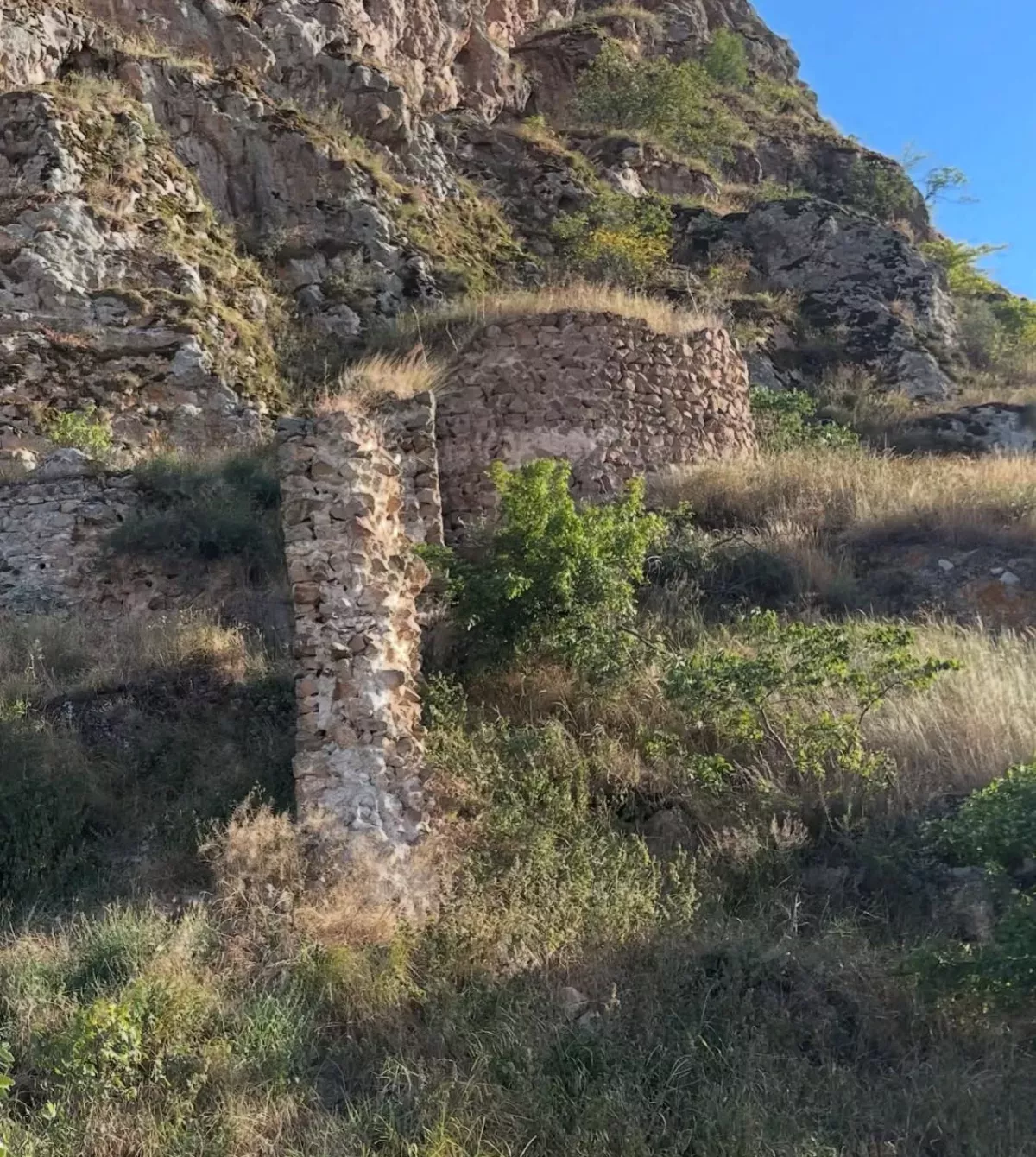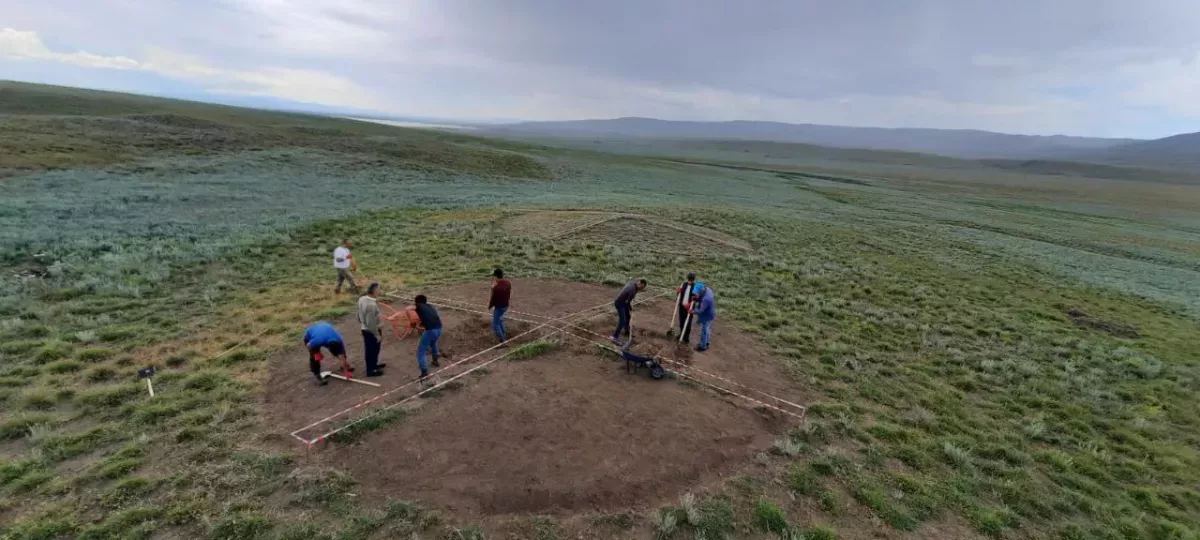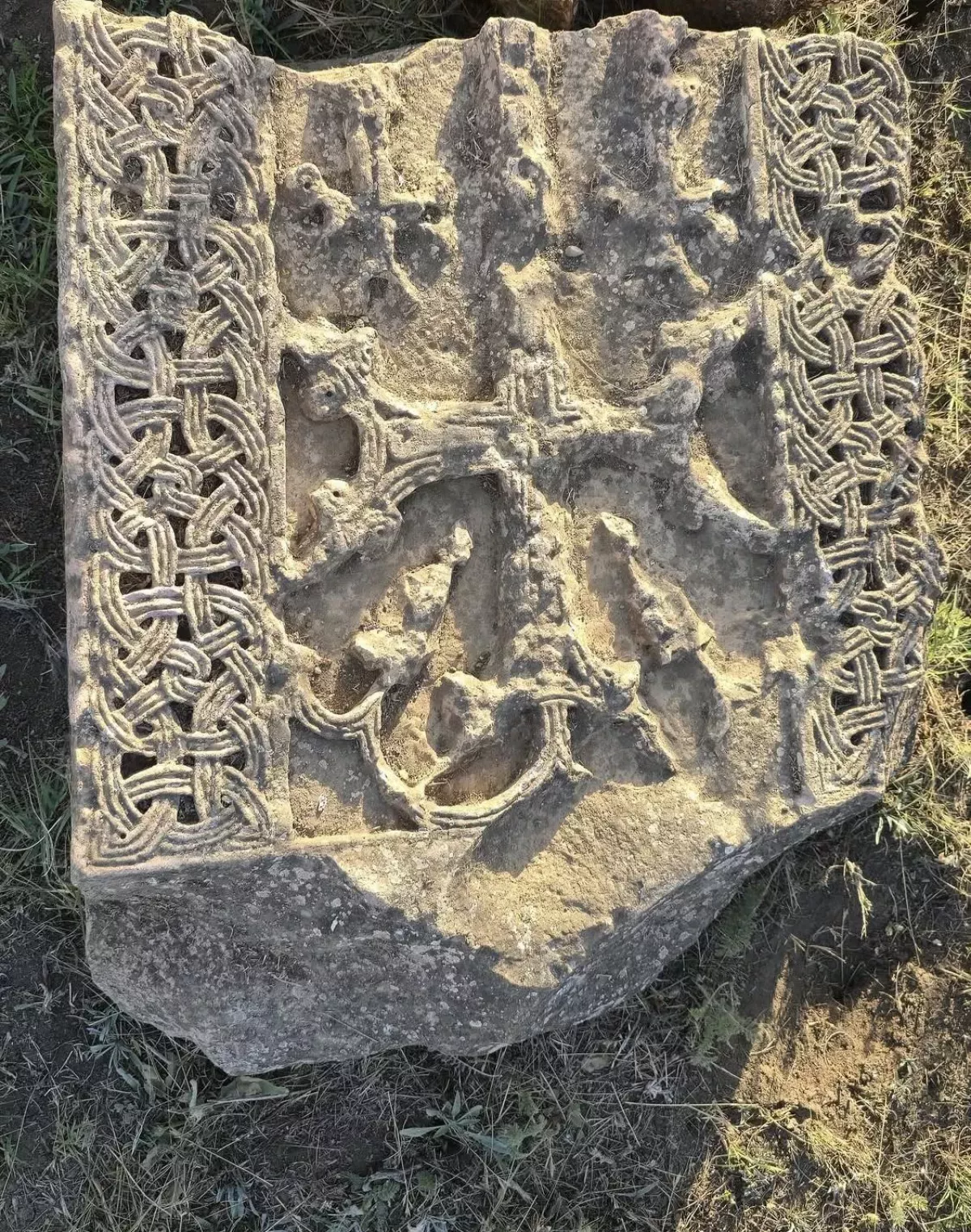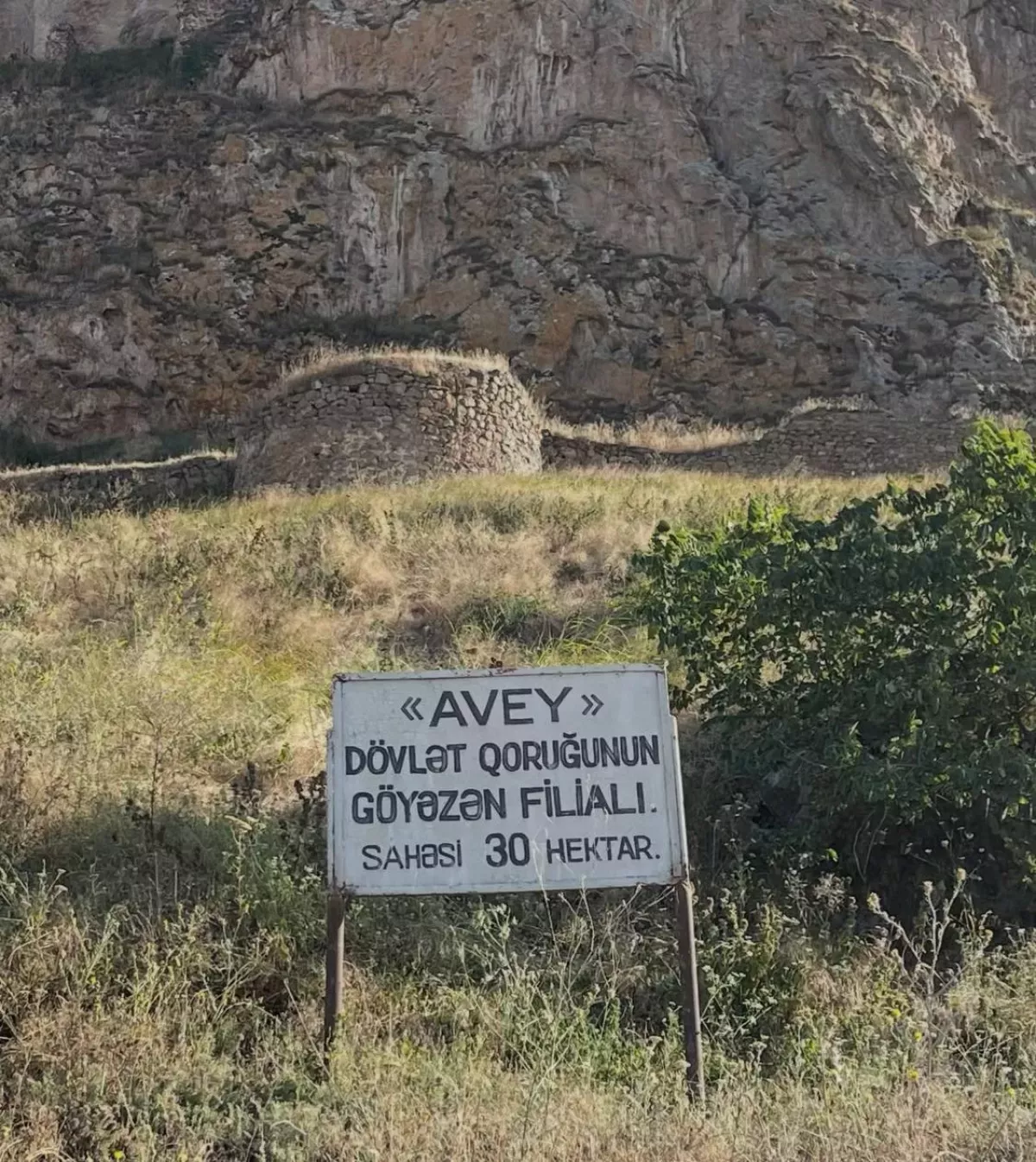Avey and Goyazan: Unlocking the secrets of Azerbaijan’s ancient heritage Part 3
Continuation of the first and second articles.
Continuing the story of the Avey Historical and Cultural Reserve, it is worth noting that the site represents not only an archaeological treasure but also a spiritual centre, reflecting the centuries-old history of the people. The territory preserves traces of ancient religious structures, sanctuaries, and worship sites that bear witness to the region’s rich cultural and spiritual past. Avey can rightly be called a living open-air museum, where every discovery there reveals new pages of Azerbaijan’s history.

A part of the historical and cultural reserve and a true symbol of the Gazakh District is Mount Goyazan. Its majestic volcanic silhouette rises 250 meters high, captivating its onlookers. Locals poetically refer to it as the “center of the world.”
Hidden on the slopes of Mount Goyazan are the ruins of a medieval fortress, the remains of ancient structures, and cave chambers concealed within the mountain. The site seems to be protecting the soul of the centuries, preserving the evidence of the region’s former military power, architectural mastery, and spiritual life for future generations. The fortress and its defensive structures form a complex system of fortifications — massive walls and towers encircle the mountain in three tiers, each with its own distinctive features and strategic functions.

The most formidable of these, the first tier, lies at the mountain’s base — a barrier seemingly separating the peak from the outside world. Higher up, the walls become more intricate, winding along steep cliffs and following the natural terrain. This blend of nature and architecture created an almost impregnable defence: each successive level posed a new challenge to any invader. The final line of fortifications crowns the summit, lending the mountain a sense of grandeur and giving the impression that the mountain itself has become part of the fortress.
The walls impress with their power — they are built from massive stone blocks, carefully fitted together. These structures testify to the high level of craftsmanship of ancient builders and amaze with their preservation despite centuries of wind and storm. At the top of the mountain, the remains of other structures can still be seen — possibly residential or defensive — which once formed part of a unified architectural complex.
One becomes amazed when imagining how such heavy stones and materials were lifted to these heights, given the difficult terrain and the absence of modern technology. This must have required meticulous planning, immense effort, and coordinated labour. Extensive archaeological research is needed to uncover all the secrets of this unique monument — research that could answer many questions about its construction, purpose, and the lives of those who once inhabited this mountain citadel.

Some scholars believe the fortress dates back to the medieval period, though differing opinions exist as well. Other researchers argue that it is much older and that fortifications existed here long before the Middle Ages, built to defend against enemies. This theory seems plausible, as the fortress occupies a commanding position overlooking the entire surrounding area. From its summit, one can observe the vast valley below — an ideal location for surveillance and defence. This strategic placement shows that even in ancient times, people understood the mountain’s importance and used it as a natural citadel, merging the power of nature with human ingenuity.

In the foothills of Goyazan lie ancient cemeteries and burial sites, where massive stone steles, monuments, and tombstones — relics of Caucasian Albania — have been preserved. Their austere forms and carved ornaments convey artistic sophistication and deep historical significance. Not far away are burial mounds that stand as witnesses to even older funerary traditions, indicating a continuous cultural layer and the lasting importance of this territory across eras and civilizations. Preliminary archaeological surveys have already confirmed the presence of rich cultural deposits. All of the discoveries that could yet to be unveiled at Goyazan area hold great scientific, archaeological, and cultural value, opening new chapters in the ancient history of Azerbaijan.

Mount Goyazan, together with its fortress and defensive structures, evokes a genuine awe. Rising above the landscape as a natural landmark among the surrounding mountains, it unites architectural grandeur with the rugged beauty of nature. Every stone seems to hold the memory of bygone ages. Together, these elements make the site not only a rare monument of fortification art but also a unique historical and cultural complex embodying the enduring heritage of Azerbaijan.
By Vahid Shukurov, exclusively for Caliber.Az








